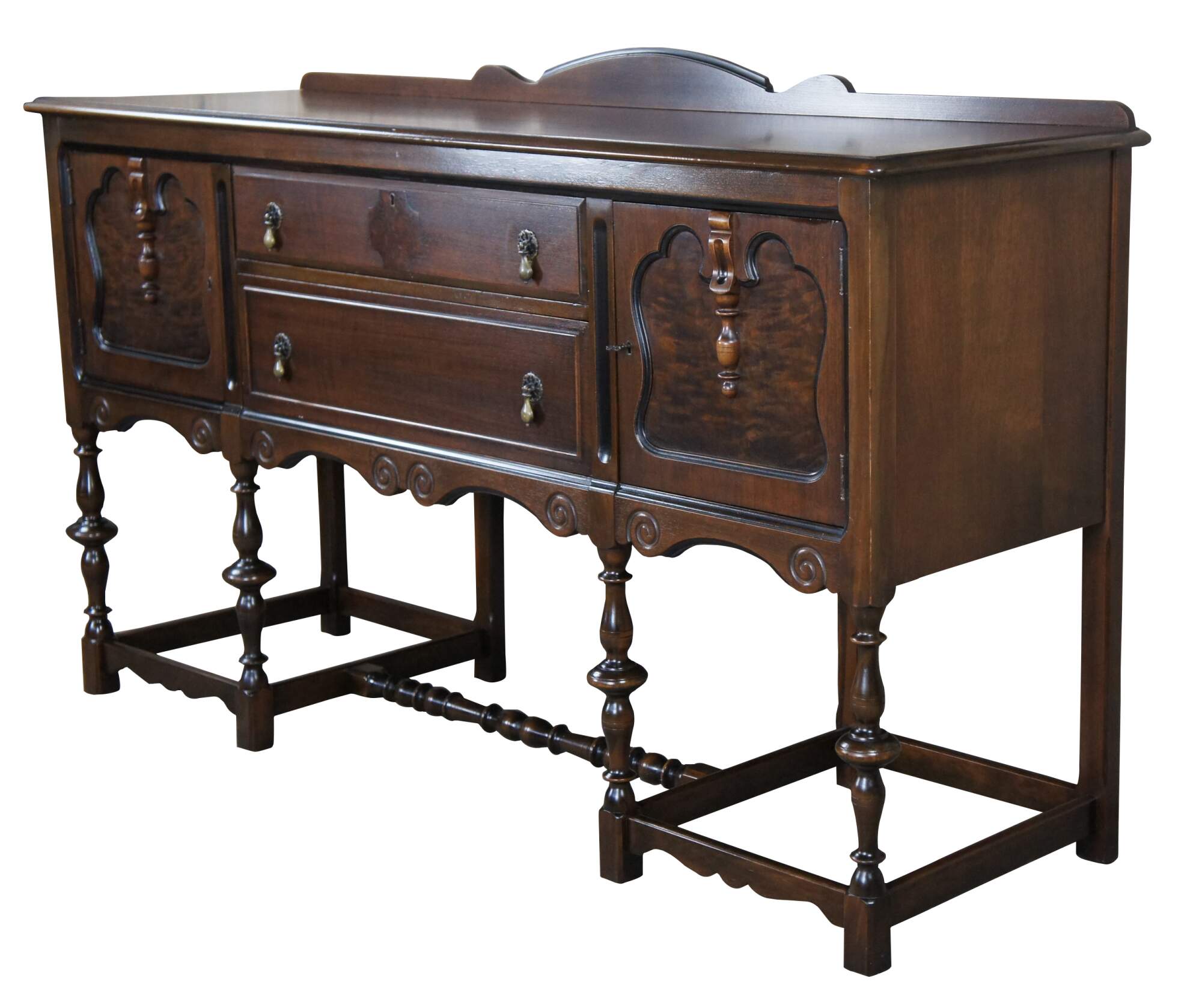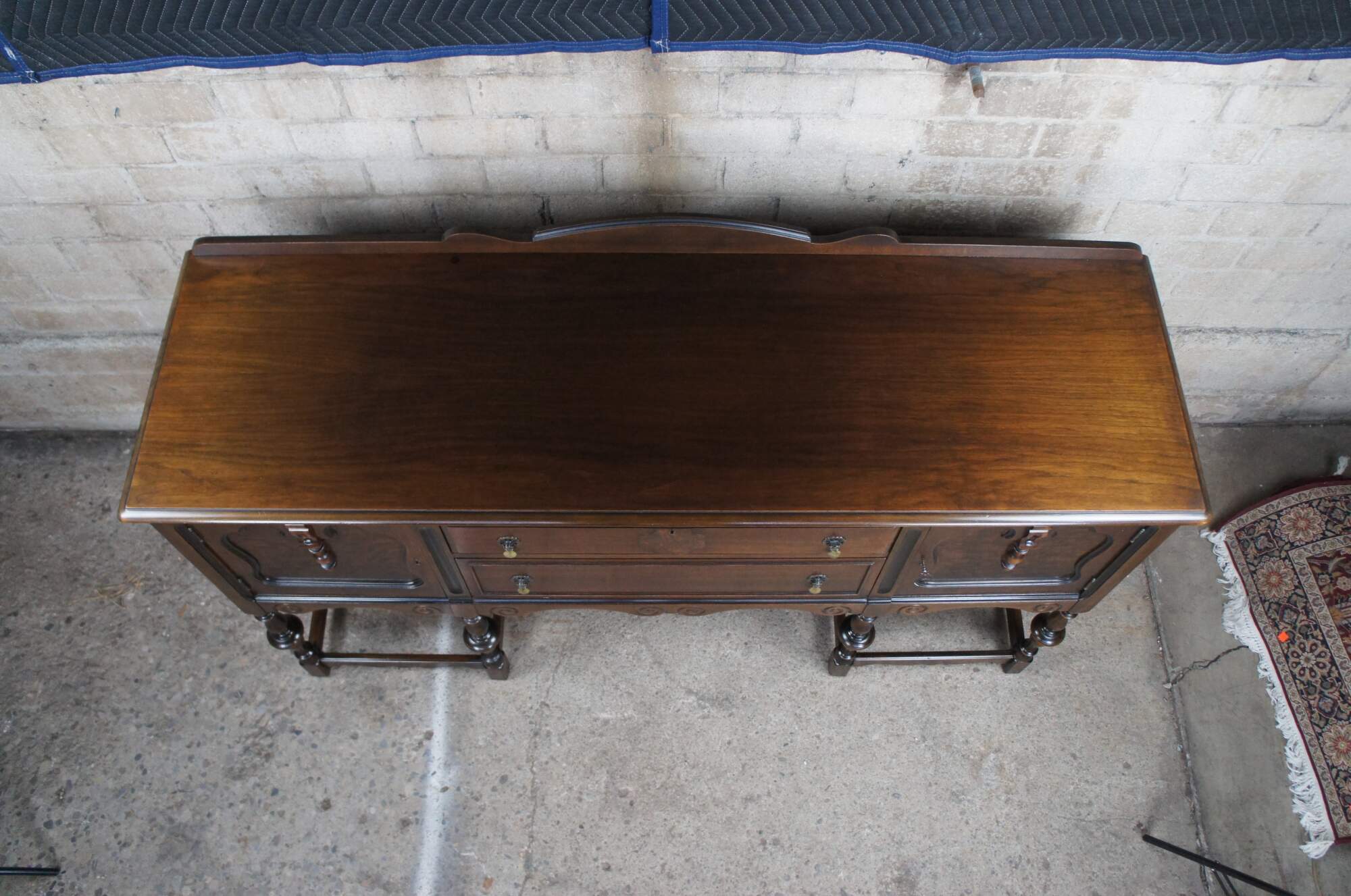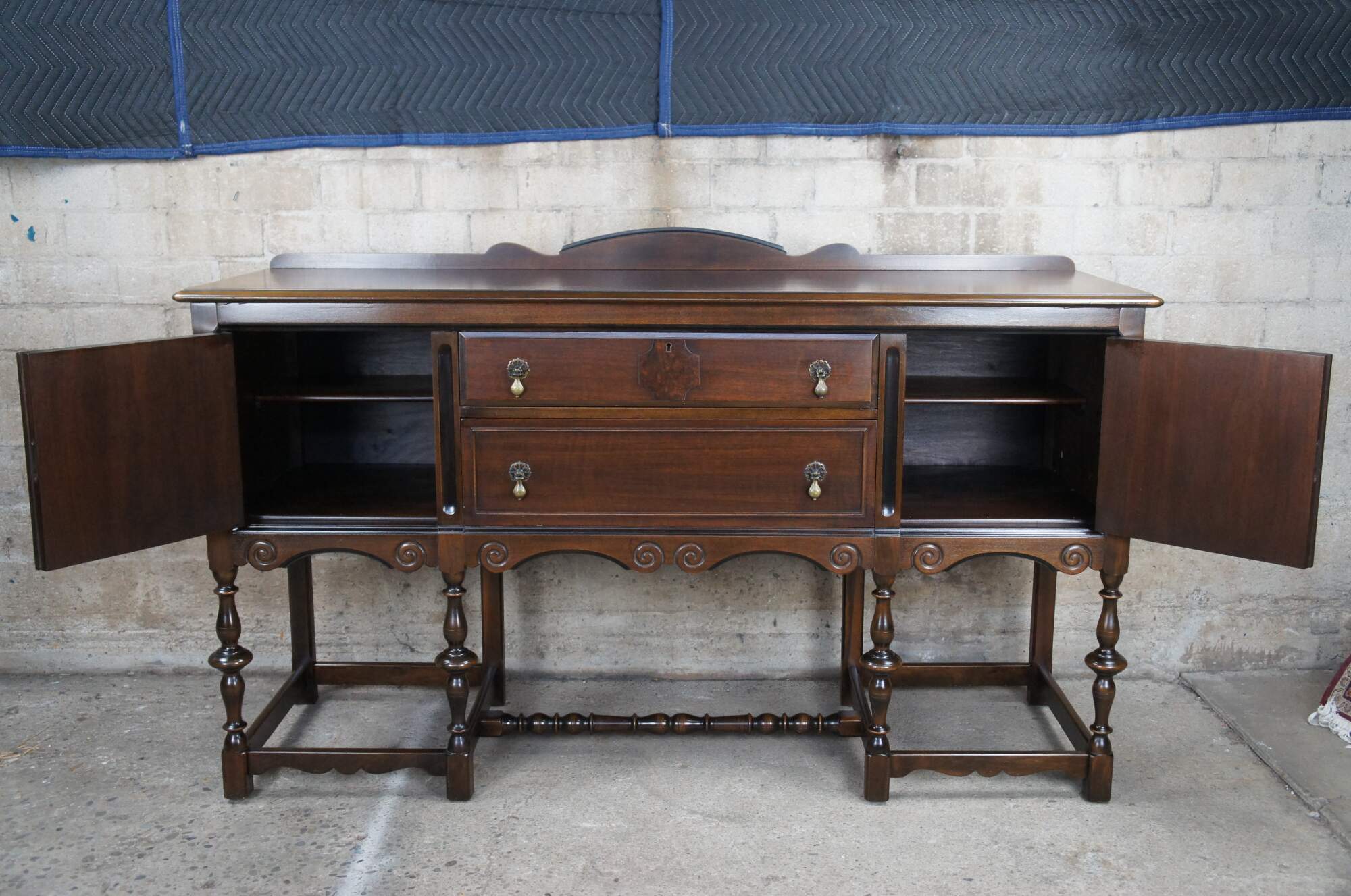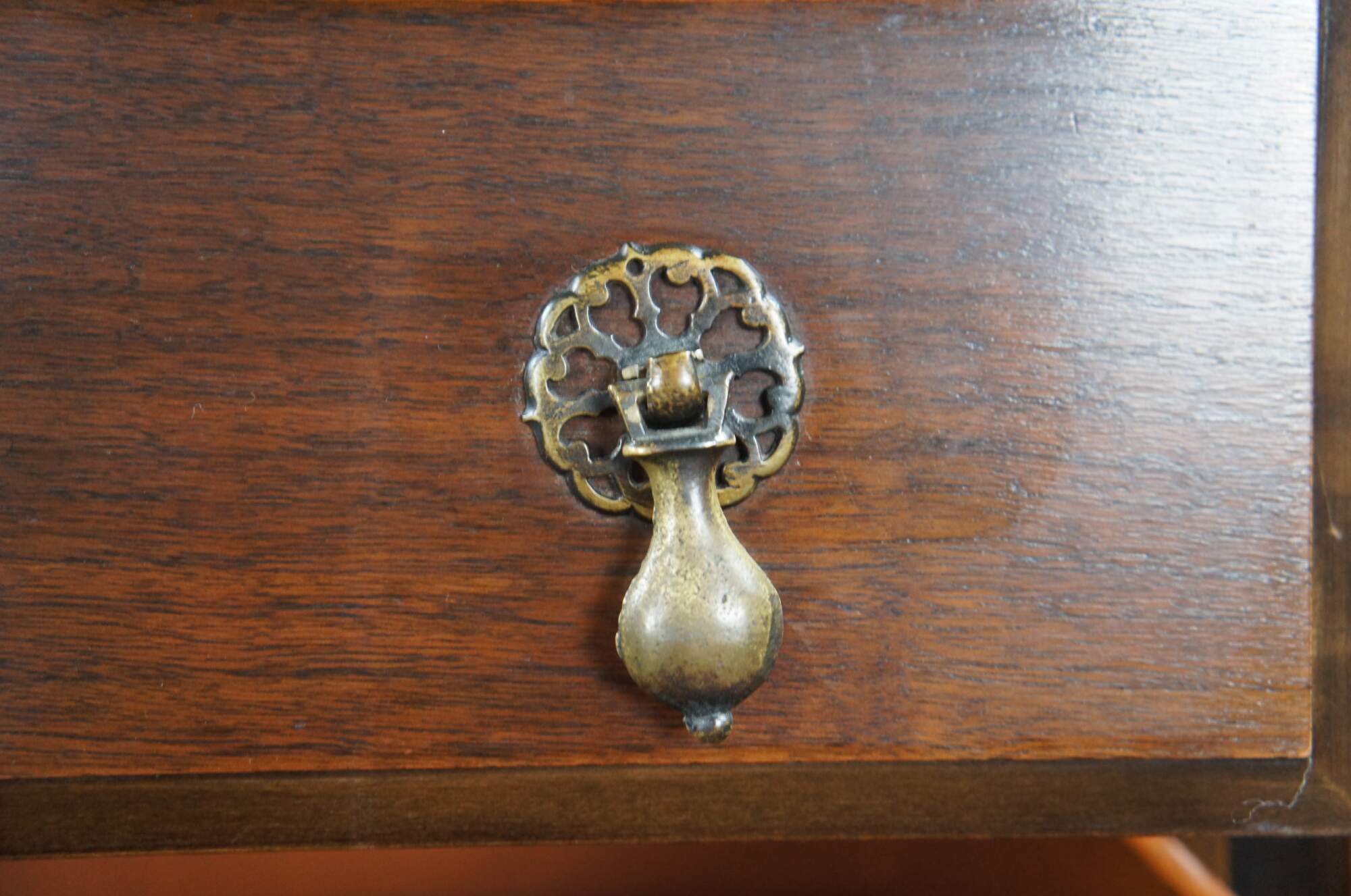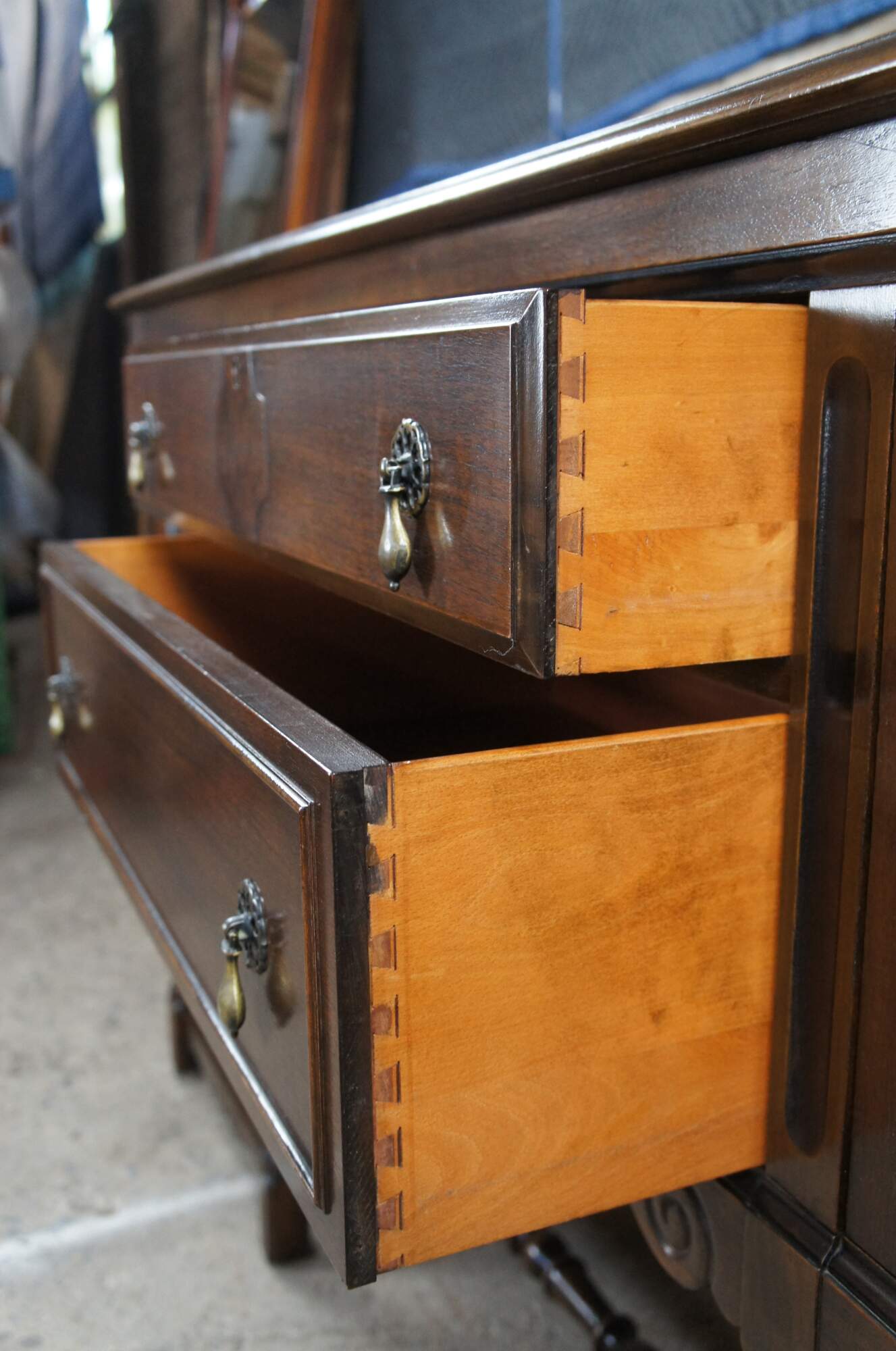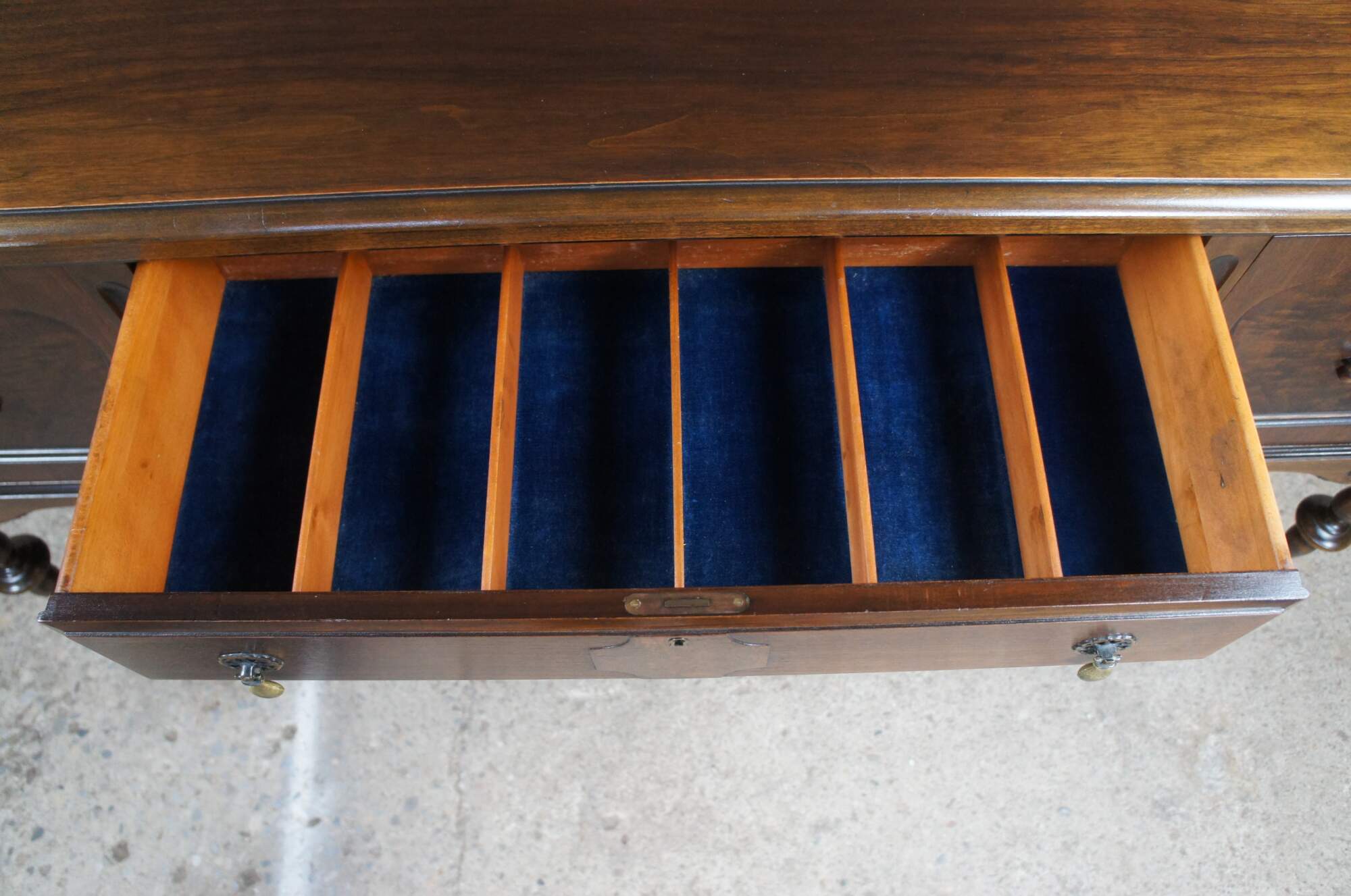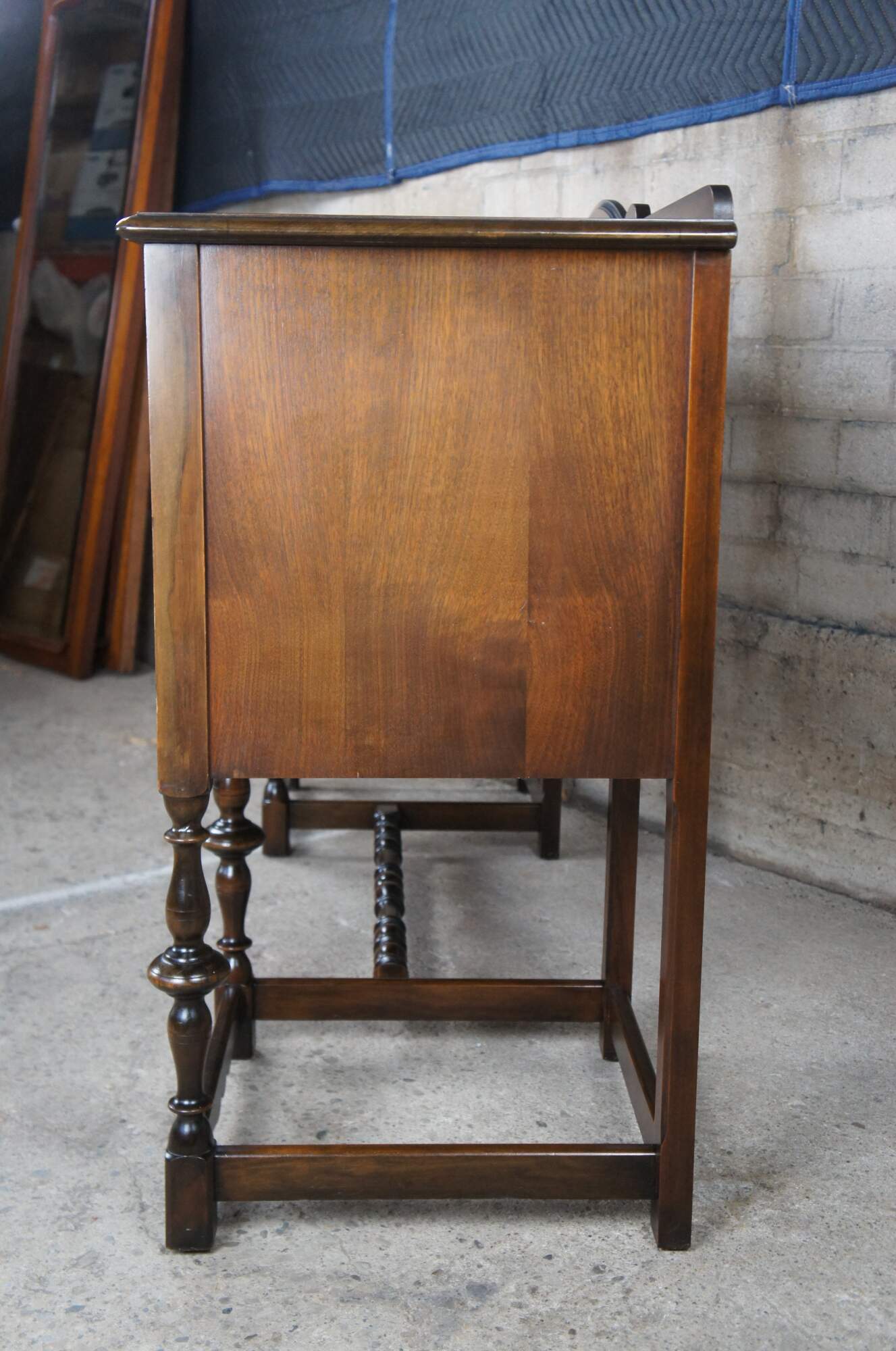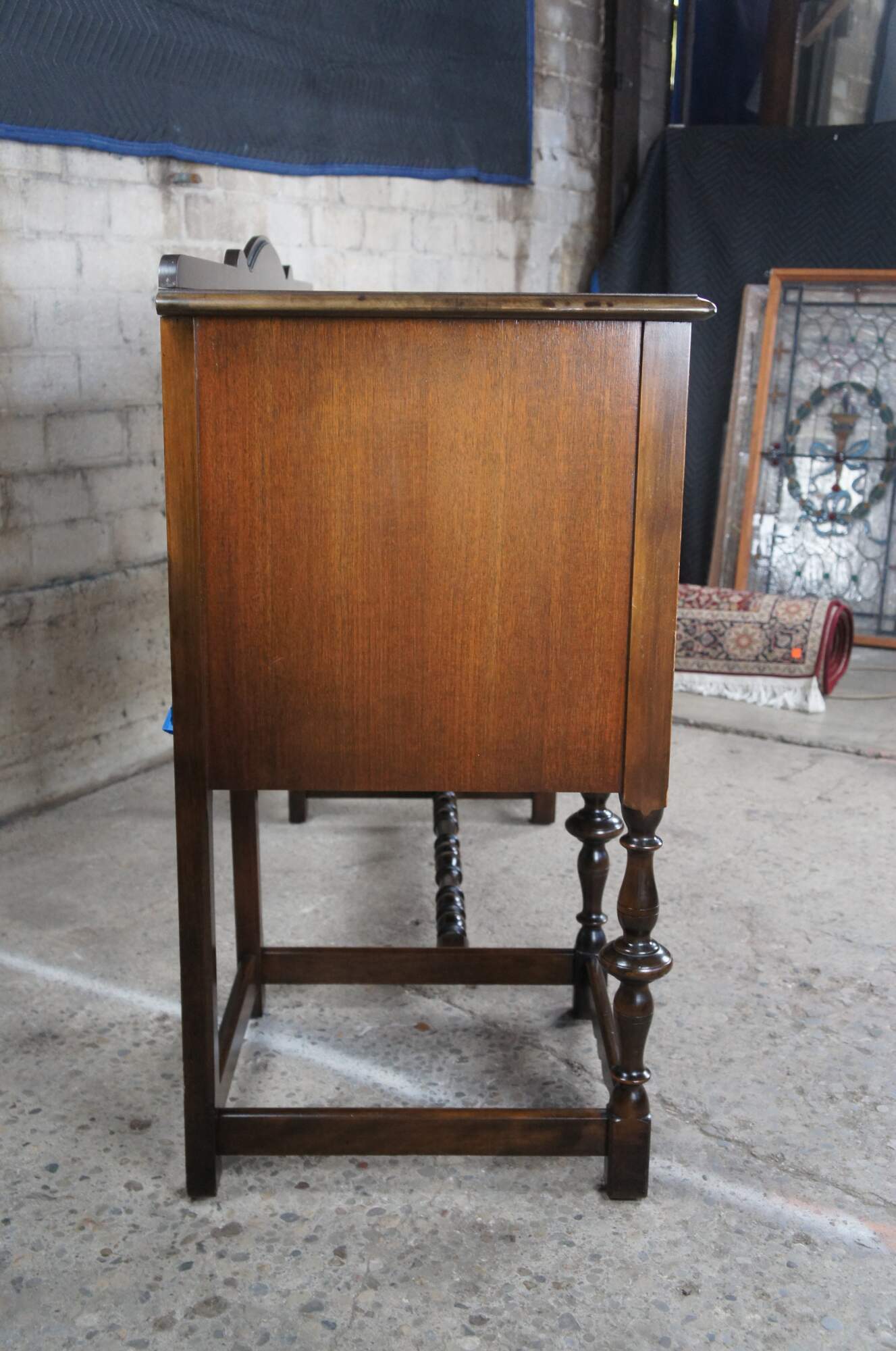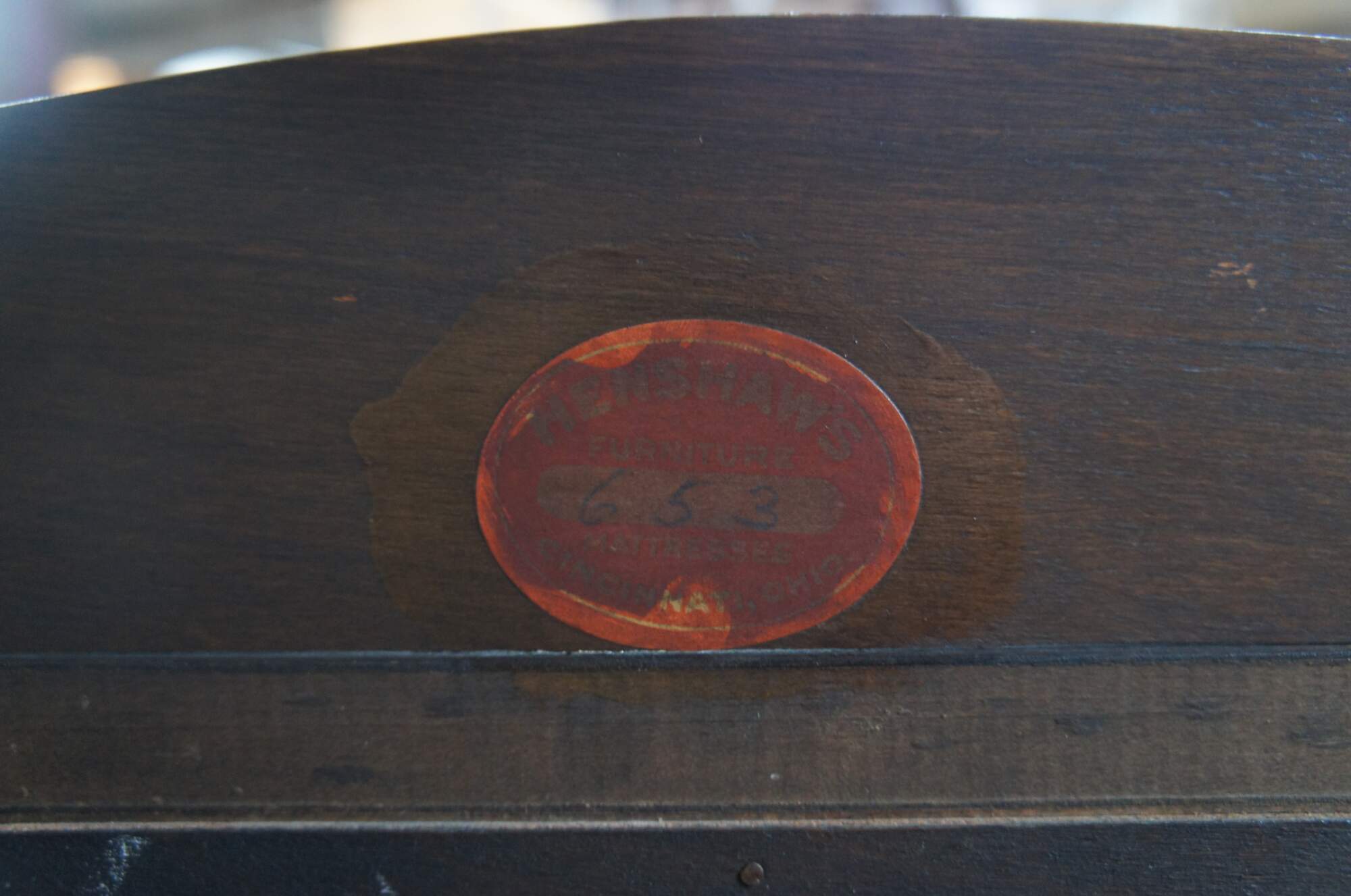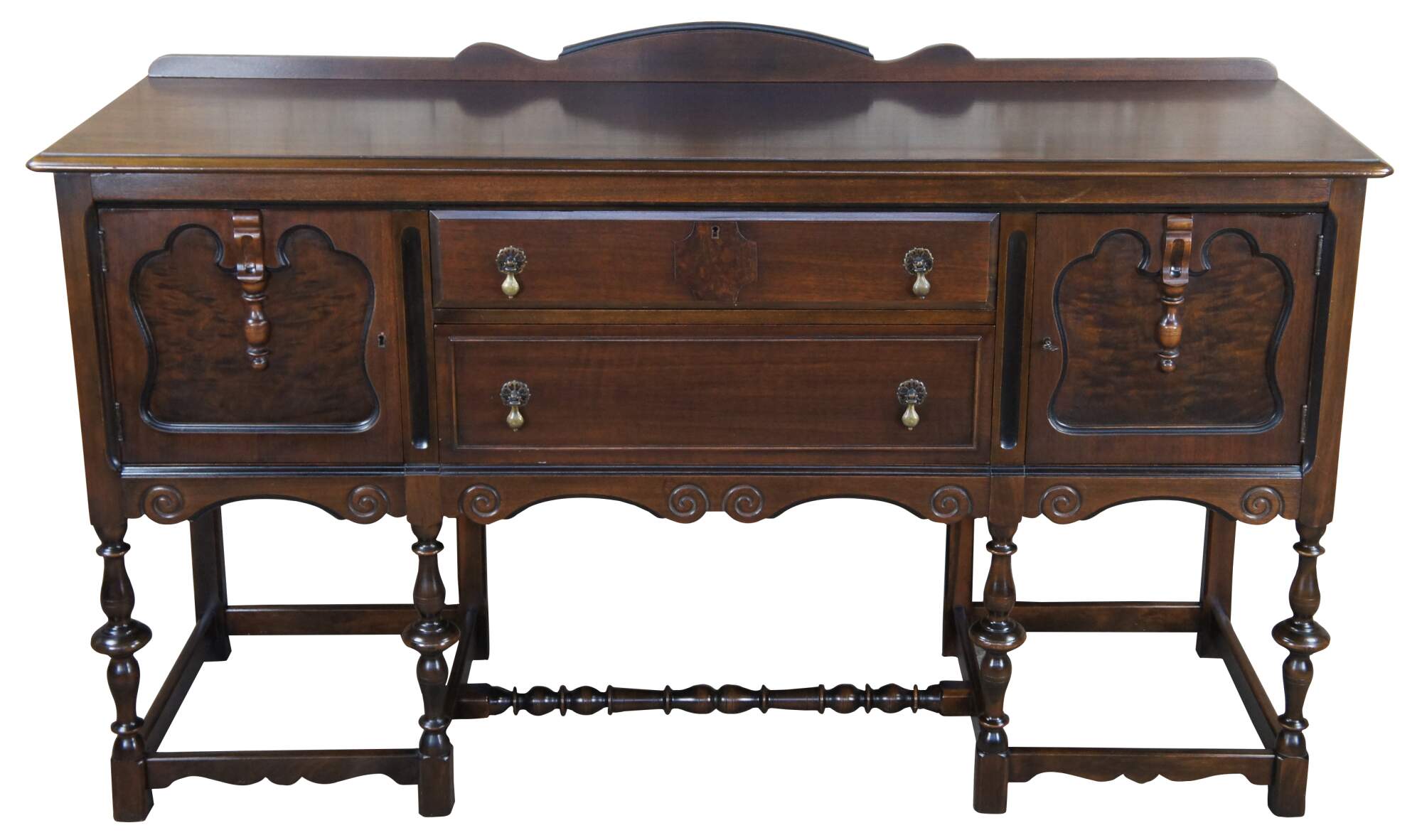
Grand Rapids Chair Co. Antique William & Mary Walnut Sideboard Jacobean Buffet
Sold
Shipping:
Free Shipping Included
Delivery:
Estimated 2-15 Business Days
Payments:
Credit Card, Check, Cash, PayPal, Apple Pay, Venmo
Returns:
30 Days 100% Money Back Guarantee, Buyer Pays Return Shipping
Description
Grand Rapids Chair Company Antique Sideboard or Server, circa 1910-20s. Drawing inspiration from William & Mary and Jacobean styling. A rectangular frame made from walnut with burled panels. The buffet is centered by two dovetailed drawers with brass filigree teardrop pulls flanked by cabinets for accessory storage. Cabinet doors feature a beautiful burlwood recessed panel with quarter cut applied spindles. Front apron shows a crescent form with scrolled accents. The cabinet is supported by tuned spindles leading to two frames of joint legs connected by a central turned stretcher. Includes a felt lined divided drawer and removable backsplash. Originally purchased from Henshaws Furniture in Cincinnati, Ohio
Grand Rapids Chair Co.
1872 - 1973
Grand Rapids, Michigan
1872: Company founded; incorporated the following year.
1945 – 1957: Company operates as a subsidiary of Sligh-Lowery, but continues to produce furniture under the Grand Rapids Chair name.
1957: Firm is purchased by Baker Furniture Co., but furniture is still produced under the Grand Rapids Chair name.
1973: Factory and assets fully integrated into Baker; furniture no longer made under the Grand Rapids Chair name.
From its founding until 1880, the company produced chairs and sold surplus logs and lumber. In 1878, they boasted more than 450 styles of chairs. More than 300 boys and girls were employed at the State Reform School in Lansing to cane the seats. In that same year, they began production of upholstery frames for parlor furniture. In 1880 Elisha Foote expanded the styles of furniture made and began manufacturing complete suites. An 1883 article about Grand Rapids Chair Co. mentions that ash is their popular wood for that season, with “carved panels and heavier moldings.” By the late 1880s their product lines had expanded to include medium-grade chamber suites, tables, bookcases, sideboards, and chiffoniers of maple, birch, cherry, and walnut, as well chairs. Ads by the turn of the century stated emphatically that “we make no chairs.”
Early 20th-century ads show both Golden Oak case pieces with serpentine fronts and cabriole legs referencing French historical styles, as well as Mission oak pieces. A 1900 article also lists mahogany, birch, maple, and bird’s-eye maple in their lines. Ads from the 1910s and ‘20s show dining room furniture, living room, and hall furniture, and spinet desks in a wide range of period styles, including Spanish Renaissance, Spanish Gothic, Elizabethan, Jacobean, Georgian, Adam, and Early American. Favored woods were walnut and mahogany. A Tudor line called “Castle Oak” seems to have been a flagship product in the early twenties.
Condition
Good Antique Condition; light wear commensurate with age.
Dimensions
20" x 66" x 40"h, surface 37"
